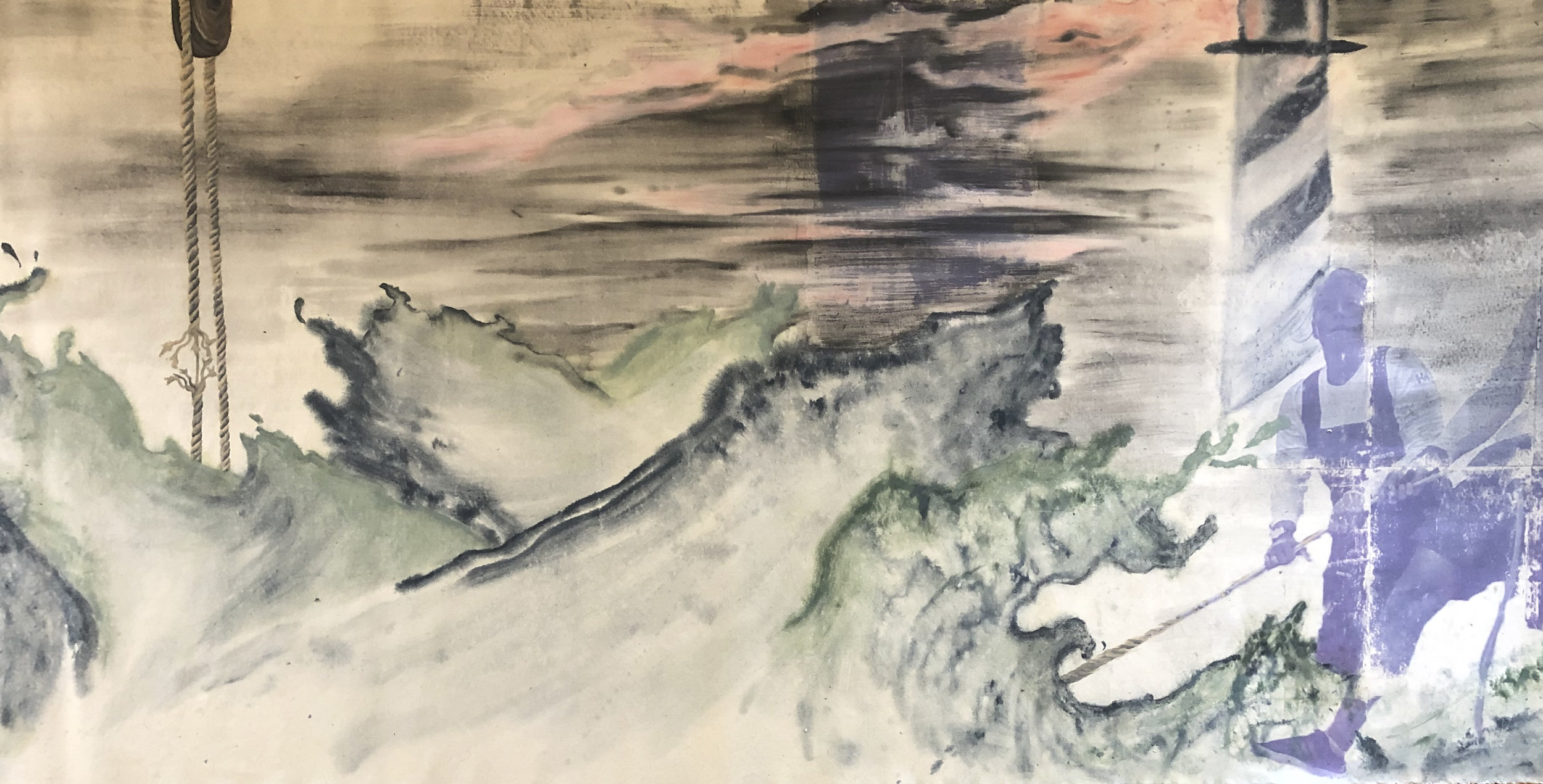Thalassic: Women, Gender, and the Sublime in Relation to Marine Art
The longing to experience the unknowable – from awe to terror – calls many to the sea. Using the panorama, a nineteenth century form of mass media as a resource, Thalassic transports the viewer to a world that they may never otherwise experience. It is an environment in which women, as well as men, take to a life of labor at sea. The large scale and semi-circular spatial placement of the panorama throws the viewer off balance. The juxtaposition of imagined terror with documented experience forges a connection between reality and deeply threatening thoughts. Using motifs of the sublime and invoking the tradition of marine painting, Thalassic integrates the heroine into a historically masculine seafaring context, thus challenging that context, presenting a woman who is openly combatting nature’s harshest elements and her own innate fears.


































































































































































































































































































































































































































































![birthofvenus(gidget)[beckys fear of sharks].jpg](https://images.squarespace-cdn.com/content/v1/58960a5c197aeaed112ac8d1/1514661887841-0Z5QJOVA21TNHJLEXTTR/birthofvenus%28gidget%29%5Bbeckys+fear+of+sharks%5D.jpg)




















